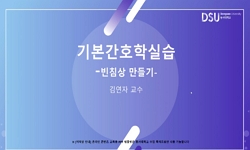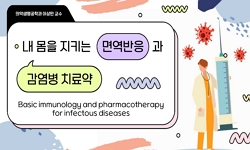Background: Bloodstream infections are the most common type of healthcare-associated infections in which the proportion of secondary bloodstream infections (SBSIs) is noticeably high. SBSIs can result in negative patient outcomes and additional care c...
http://chineseinput.net/에서 pinyin(병음)방식으로 중국어를 변환할 수 있습니다.
변환된 중국어를 복사하여 사용하시면 됩니다.
- 中文 을 입력하시려면 zhongwen을 입력하시고 space를누르시면됩니다.
- 北京 을 입력하시려면 beijing을 입력하시고 space를 누르시면 됩니다.

이차 혈류감염의 특성과 예후 관련요인 분석 = Analysis of Characteristics and Prognosis of Healthcare-Associated Secondary Bloodstream Infection
한글로보기https://www.riss.kr/link?id=A104770514
- 저자
- 발행기관
- 학술지명
- 권호사항
-
발행연도
2017
-
작성언어
Korean
- 주제어
-
등재정보
KCI등재후보
-
자료형태
학술저널
-
수록면
43-55(13쪽)
-
KCI 피인용횟수
0
- 제공처
- 소장기관
-
0
상세조회 -
0
다운로드
부가정보
다국어 초록 (Multilingual Abstract)
Background: Bloodstream infections are the most common type of healthcare-associated infections in which the proportion of secondary bloodstream infections (SBSIs) is noticeably high. SBSIs can result in negative patient outcomes and additional care costs. The purpose of this study was to describe the characteristics of SBSIs among hospitalized patients, identify potential predictors of SBSIs, and explore the prognoses of community-acquired and healthcare-associated SBSIs. Methods: This study was conducted with 237 adult patients with SBSIs in a general hospital in 2015. Results: The most common primary infection among SBSIs was urinary tract infection (UTI). The most common pathogens were Escherichia coli for UTI and Staphylococcus aureus for pneumonia. Mortality due to SBSIs was 4.24 times higher among patients in intensive care units than among those in general units; mortality also increased by 1.24 times as the APACHE II scores increased by 1 point. Conclusion: Patients with UTI and pneumonia are at high risk for developing SBSIs. Further research is needed to identify risk factors for SBSIs by comparing SBSI and non-SBSI cases in a case-control study.
참고문헌 (Reference)
1 박요환, "폐렴사슬알균 균혈증과 동반된 양측 무릎의 화농성 관절염" 대한중환자의학회 28 (28): 230-233, 2013
2 황선덕, "급성신우신염 환자에서 균혈증의 위험 인자 분석 - 단일기관 분석" 대한신장학회 28 (28): 418-423, 2009
3 Marschall J, "Strategies to prevent central line-associated bloodstream infections in acute care hospitals: 2014 update" 35 : 753-771, 2014
4 Falcone M, "Risk factors and outcomes for bloodstream infections secondary to Clostridium difficile infection" 60 : 252-257, 2015
5 Girou E, "Risk factors and outcome of nosocomial infections:results of a matched case-control study of ICU patients" 157 : 1151-1158, 1998
6 Ridgway JP, "Performance characteristics and associated outcomes for an automated surveillance tool for bloodstream infection" 44 : 567-571, 2016
7 Shorr AF, "Outcomes associated with bacteremia in the setting of methicillin-resistant Staphylococcus aureus pneumonia: a retrospective cohort study" 19 : 312-, 2015
8 Garbee DD, "Opportunistic fungal infections in critical care units" 29 : 67-79, 2017
9 Yoo JH, "KONIS manual 2016"
10 Raymond DP, "Impact of bloodstream infection on outcomes among infected surgical inpatients" 233 : 549-555, 2001
1 박요환, "폐렴사슬알균 균혈증과 동반된 양측 무릎의 화농성 관절염" 대한중환자의학회 28 (28): 230-233, 2013
2 황선덕, "급성신우신염 환자에서 균혈증의 위험 인자 분석 - 단일기관 분석" 대한신장학회 28 (28): 418-423, 2009
3 Marschall J, "Strategies to prevent central line-associated bloodstream infections in acute care hospitals: 2014 update" 35 : 753-771, 2014
4 Falcone M, "Risk factors and outcomes for bloodstream infections secondary to Clostridium difficile infection" 60 : 252-257, 2015
5 Girou E, "Risk factors and outcome of nosocomial infections:results of a matched case-control study of ICU patients" 157 : 1151-1158, 1998
6 Ridgway JP, "Performance characteristics and associated outcomes for an automated surveillance tool for bloodstream infection" 44 : 567-571, 2016
7 Shorr AF, "Outcomes associated with bacteremia in the setting of methicillin-resistant Staphylococcus aureus pneumonia: a retrospective cohort study" 19 : 312-, 2015
8 Garbee DD, "Opportunistic fungal infections in critical care units" 29 : 67-79, 2017
9 Yoo JH, "KONIS manual 2016"
10 Raymond DP, "Impact of bloodstream infection on outcomes among infected surgical inpatients" 233 : 549-555, 2001
11 Korean Nosocomial Infections Surveillance System, "ICU report" KONIS System
12 Fortin E, "Healthcare-associated bloodstream infections secondary to a urinary focus: the Québec provincial surveillance results" 33 : 456-462, 2012
13 Friedman ND, "Health care-associated bloodstream infections in adults:a reason to change the accepted definition of community-acquired infections" 137 : 791-797, 2002
14 Korea Centers for Disease Control and Prevention, "Guideline for healthcare associated infection sample surveillance"
15 윤필훈, "Extended-Spectrum β-Lactamase 생성 Escherichia coli와 Klebsiella pneumoniae 혈류감염의 역학 비교" 대한의료관련감염관리학회 19 (19): 45-51, 2014
16 Galpern D, "Effectiveness of a central line bundle campaign on line-associated infections in the intensive care unit" 144 : 492-495, 2008
17 Paño-Pardo JR, "Community-onset bloodstream and other infections, caused by carbapenemase-producing Enterobacteriaceae: epidemiological, microbiological, and clinical features" 3 : ofw136-, 2016
18 Korea Centers for Disease Control and Prevention, "Case definitions for national notifiable infectious disease" Korea Centers for Disease Control and Prevention 1-59, 2016
19 Horan TC, "CDC/NHSN surveillance definition of health care-associated infection and criteria for specific types of infections in the acute care setting" 36 : 309-332, 2008
20 Watson CM, "Bloodstream infections and central line-associated bloodstream infections" 94 : 1233-1244, 2014
21 Ackermann RJ, "Bacteremic urinary tract infection in older people" 44 : 927-933, 1996
22 Picot-Guéraud R, "Bacteremia caused by multidrug-resistant bacteria in a French university hospital center: 3 years of collection" 43 : 960-964, 2015
23 Carrico R, "APIC text of infection control and epidemiology" APIC 1-50, 2009
24 김지혜, "2005-2008년 단일 기관의 소아 혈액 종양 환자에서의 균혈증 양상: 소아 혈액 종양 환자에서의 균혈증" 대한소아감염학회 17 (17): 36-48, 2010
동일학술지(권/호) 다른 논문
-
기관 흡인방법에 따른 외과계 중환자실의 환경오염 수준에 미치는 영향
- 대한의료관련감염관리학회
- 김 기 숙
- 2017
- KCI등재후보
-
Steady Inflow of Vancomycin-Resistant Enterococci from Outside a Hospital
- 대한의료관련감염관리학회
- 안혜선
- 2017
- KCI등재후보
분석정보
인용정보 인용지수 설명보기
학술지 이력
| 연월일 | 이력구분 | 이력상세 | 등재구분 |
|---|---|---|---|
| 2023 | 평가예정 | 재인증평가 신청대상 (재인증) | |
| 2020-01-01 | 평가 | 등재학술지 선정 (재인증) |  |
| 2018-01-01 | 평가 | 등재후보학술지 선정 (신규평가) |  |
| 2017-12-01 | 평가 | 등재후보 탈락 (계속평가) | |
| 2016-12-31 | 학술지명변경 | 한글명 : 병원감염관리 -> 의료관련감염관리외국어명 : Korean Journal of Nosocomial Infection Control -> Korean Journal of Healthcare-Associated Infection Control and Prevention |  |
| 2016-01-01 | 평가 | 등재후보학술지 유지 (계속평가) |  |
| 2015-07-09 | 학회명변경 | 한글명 : 대한병원감염관리학회 -> 대한의료관련감염관리학회영문명 : Korean Society For Nosocomial Infection Control -> Korean Society for Healthcare-associated Infection Control |  |
| 2014-01-01 | 평가 | 등재후보학술지 선정 (신규평가) |  |
| 2013-01-01 | 평가 | 등재후보 탈락 (등재후보2차) | |
| 2012-01-01 | 평가 | 등재후보 1차 FAIL (기타) |  |
| 2010-01-01 | 평가 | 등재후보학술지 선정 (신규평가) |  |
학술지 인용정보
| 기준연도 | WOS-KCI 통합IF(2년) | KCIF(2년) | KCIF(3년) |
|---|---|---|---|
| 2016 | 0.83 | 0.83 | 0.57 |
| KCIF(4년) | KCIF(5년) | 중심성지수(3년) | 즉시성지수 |
| 0.57 | 0.58 | 1.335 | 0.11 |





 KCI
KCI







